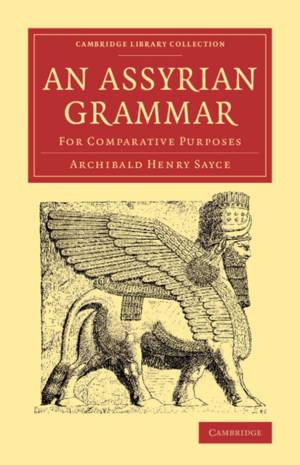
- Afhalen na 1 uur in een winkel met voorraad
- Gratis thuislevering in België vanaf € 30
- Ruim aanbod met 7 miljoen producten
- Afhalen na 1 uur in een winkel met voorraad
- Gratis thuislevering in België vanaf € 30
- Ruim aanbod met 7 miljoen producten
Zoeken
Omschrijving
Archibald Henry Sayce (1845-1933) became interested in Middle Eastern languages and scripts while still a teenager. Old Persian and Akkadian cuneiform had recently been deciphered, and at the same time Indo-European studies had emerged as a lively field, with publications by scholars including Grimm, Bopp and Schleicher. Assyrian offered opportunities to historians of the Semitic languages similar to those provided by Avestan to Indo-Europeanists, and Sayce's grammar, published in 1872, was aimed at such an audience. Only transliteration was used, as cuneiform would be both expensive and redundant for philological purposes. In his preface, Sayce acknowledges the recent work of Oppert, Hincks, and Smith (whose translation of part of the epic tale of Gilgamesh attracted considerable publicity later that year). Sayce considers the place of Assyrian in the Semitic language family and its development over time, and reviews the archaeological evidence and scholarly literature, before presenting its phonology, morphology, syntax and prosody.
Specificaties
Betrokkenen
- Auteur(s):
- Uitgeverij:
Inhoud
- Aantal bladzijden:
- 210
- Taal:
- Engels
- Reeks:
Eigenschappen
- Productcode (EAN):
- 9781108077927
- Verschijningsdatum:
- 30/10/2014
- Uitvoering:
- Paperback
- Formaat:
- Trade paperback (VS)
- Afmetingen:
- 140 mm x 216 mm
- Gewicht:
- 272 g

Alleen bij Standaard Boekhandel
+ 128 punten op je klantenkaart van Standaard Boekhandel
Beoordelingen
We publiceren alleen reviews die voldoen aan de voorwaarden voor reviews. Bekijk onze voorwaarden voor reviews.








